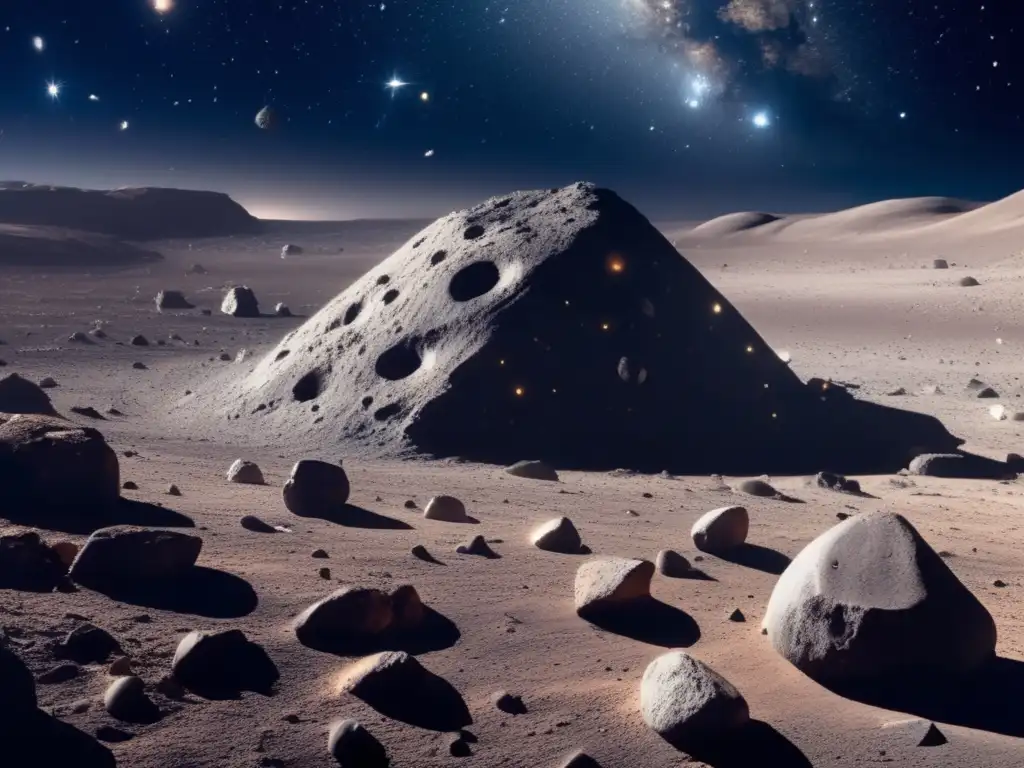Alien Life And Asteroids: An Unexpected Connection

Introduction
The study of asteroids has always been fascinating for astronomers and astrobiologists alike, as they provide an insight into the formation of our Solar System and also a potential source of resources for future space exploration. However, another aspect of asteroids that has emerged in recent years is their possible connection to extraterrestrial life. In this article, we will explore the unexpected connection between alien life and asteroids, shedding light on some exciting discoveries and theories.
Asteroids as Harbingers of Life

Organic Molecules Found on Asteroids
One of the most promising findings in the search for alien life has been the discovery of organic molecules on asteroids. In 2010, NASA's Stardust mission collected samples from the tail of Comet Wild 2, which contained complex organic compounds that are essential building blocks of life. Similarly, the Japanese Hayabusa2 spacecraft returned to Earth in December 2020 with samples from Ryugu, another asteroid, that showed it contained organic matter.
Asteroids as Seeds for Life on Earth
Another theory suggests that asteroids could have brought the first seeds of life to Earth. According to this theory, primitive microorganisms could have hitched a ride on asteroids that collided with our planet billions of years ago. While this theory is still debated, the discovery of a bacterium that can survive in space gives some credence to the idea.
Asteroids and the Panspermia Hypothesis
Panspermia is the idea that life exists throughout the universe, and that life on Earth may have originated from elsewhere in the cosmos. Asteroids play a significant role in this hypothesis, as they are believed to have carried the building blocks of life to other planets and moons in our Solar System. This theory gained some validation in 2018 when researchers found evidence of organic matter on Mars, which could have originated from asteroids.
Extraterrestrial Life on Asteroids

The Possibility of Extremophile Life
Asteroids are known for their harsh conditions, including extreme temperatures, radiation, and vacuum. However, there are some organisms on Earth that can survive in similar conditions, known as extremophiles. Some researchers have suggested that asteroids could be home to similar forms of life, adapted to the harsh environment. While there is no concrete evidence of this yet, it presents an interesting avenue for future exploration.
Searching for Biosignatures on Asteroids
Astronomers have been using a variety of instruments to search for potential biosignatures on asteroids, such as spectral analysis or looking for signs of water or other essential elements for life. One particularly promising asteroid in this regard is Ceres, the largest object in the asteroid belt. Ceres has shown evidence of water, organic matter, and even subsurface briny liquid, making it a prime target for further exploration.
The Implications of Finding Alien Life on Asteroids

Impact on Our Understanding of Life and the Universe
The discovery of alien life on asteroids would have significant implications for our understanding of life and the universe as a whole. It would confirm the existence of extraterrestrial life and suggest that life may be more common in the universe than previously thought. Moreover, studying the evolution of life on asteroids could shed light on the origins and diversity of life in the cosmos.
Impact on Space Exploration
The discovery of resources and potential habitats for alien life on asteroids could have far-reaching implications for space exploration. Asteroids could provide a source of water, minerals, and other valuable resources for future manned missions or even colonies in space. Moreover, studying the interaction between life and asteroids could help us in designing better ways to protect our planet from potential asteroid impacts in the future.
Frequently Asked Questions

-
Can life survive in the harsh conditions of asteroids?
There is evidence that some organisms on Earth, known as extremophiles, can survive in similar conditions. However, there is no concrete evidence of extraterrestrial life on asteroids yet.
-
What is panspermia?
Panspermia is the idea that life exists throughout the universe, and that life on Earth may have originated from elsewhere in the cosmos.
-
What is Ceres, and why is it important?
Ceres is the largest object in the asteroid belt and has shown evidence of water, organic matter, and subsurface liquid. It is considered a prime target for further exploration.
-
What are biosignatures?
Biosignatures are signs of life, such as spectral analysis, the presence of water or essential elements, or other unusual chemical patterns.
-
What are the implications of finding alien life on asteroids?
The discovery of alien life on asteroids would have significant implications for our understanding of life and the universe as a whole. It could also have far-reaching implications for space exploration and resource utilization.
Conclusion
The connection between alien life and asteroids is an unexpected one, yet it holds great promise for the future of space exploration and astrobiology. The possibility of finding extraterrestrial life on asteroids could bring profound implications for our understanding of life and the universe. Moreover, the exploration and utilization of asteroids could provide valuable resources for future space missions and colonies. As we continue to learn more about these enigmatic objects, we are sure to uncover more exciting discoveries about their connection to both our past and future.
Additional Resources

For those interested in delving deeper into this topic, the following resources may prove useful:
- NASA's Asteroid Redirect Mission
- OSIRIS-REx mission
- The Planetary Society's Asteroid Initiative
- ESA's Hera mission
 Cosmic Voyagers: Can Asteroids Carry Life Across Space?
Cosmic Voyagers: Can Asteroids Carry Life Across Space? Asteroids: A Pathway For Life In The Cosmos?
Asteroids: A Pathway For Life In The Cosmos? Stellar Lifeboats: How Asteroids May Carry Life
Stellar Lifeboats: How Asteroids May Carry LifeIf you want to discover more articles similar to Alien Life And Asteroids: An Unexpected Connection, you can visit the Asteroids and Extraterrestrial Life category.
Leave a Reply

Articulos relacionados: